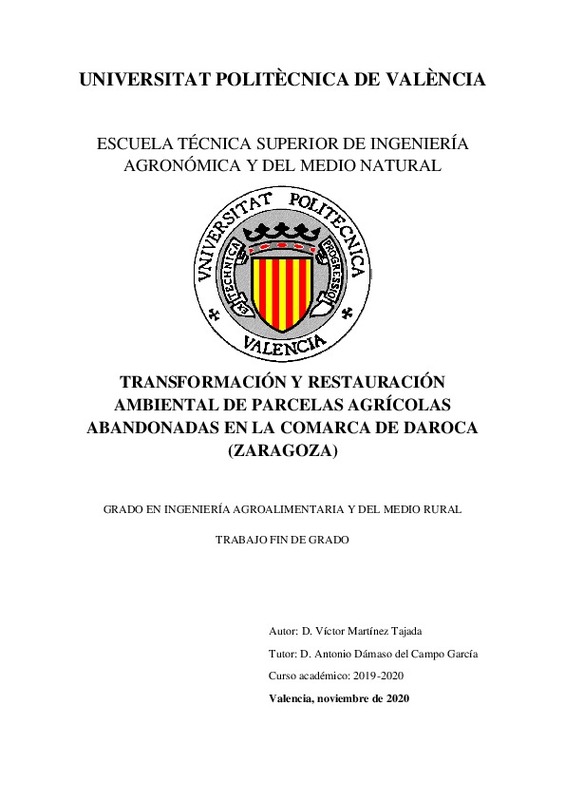JavaScript is disabled for your browser. Some features of this site may not work without it.
Buscar en RiuNet
Listar
Mi cuenta
Estadísticas
Ayuda RiuNet
Admin. UPV
Transformación y restauración de parcelas agrícolas abandonadas en la Comarca de Daroca (Zaragoza)
Mostrar el registro completo del ítem
Martínez Tajada, V. (2020). Transformación y restauración de parcelas agrícolas abandonadas en la Comarca de Daroca (Zaragoza). Universitat Politècnica de València. http://hdl.handle.net/10251/157944
Por favor, use este identificador para citar o enlazar este ítem: http://hdl.handle.net/10251/157944
Ficheros en el ítem
Metadatos del ítem
| Título: | Transformación y restauración de parcelas agrícolas abandonadas en la Comarca de Daroca (Zaragoza) | |||
| Autor: | Martínez Tajada, Víctor | |||
| Director(es): | ||||
| Entidad UPV: |
|
|||
| Fecha acto/lectura: |
|
|||
| Resumen: |
[ES] Transformación y restauración ambiental de parcelas agrícolas abandonadas en la Comarca de Daroca (Zaragoza)
La Comarca de Daroca, al suroeste de Aragón, con 1.118 Km² la componen 35 municipios y cerca de 5.500 ...[+]
[EN] Environmental transformation and restoration of abandoned agricultural plots in the Daroca region (Zaragoza)
The Region of Daroca, southwest of Aragon, with 1,118 km², is made up of 35 municipalities and about 5,500 ...[+]
|
|||
| Palabras clave: |
|
|||
| Derechos de uso: | Reconocimiento (by) | |||
| Editorial: |
|
|||
| Titulación: |
|
|||
| Tipo: |
|
Localización
recommendations
Este ítem aparece en la(s) siguiente(s) colección(ones)
-
ETSIAMN - Trabajos académicos [3541]
Escuela Técnica Superior de Ingeniería Agronómica y del Medio Natural







